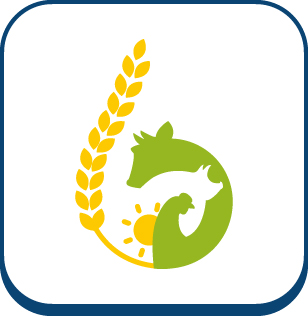Optimal management of gilt reproduction requires oestrus synchronization. Hormonal treatments are used for this purpose, but there is a growing demand for non-hormonal alternatives, especially in organic farms. The boar effect is an important alternative opportunity to induce and synchronize oestrus without hormones. Before puberty, gilts exhibit a ‘waiting period’ during which boar exposure could induce and synchronize the first ovulation. We searched for salivary biomarkers of this period of boar effect receptivity to improve detection of the gilts to stimulate with the perspective of enhancing the efficacy of the boar effect. Saliva samples were collected from 30 Large-White×Landrace crossbred gilts between 140 and 175 days of age. Gilts were exposed twice a day to a boar and subjected to oestrus detection from 150 to 175 days of age. Among the 30 gilts, 10 were detected in oestrus 4 to 7 days after the first introduction of the boar and were considered receptive to the boar effect, 14 were detected in oestrus more than 8 days after first boar contact, and six did not show oestrus and were considered non-receptive. Saliva samples from six receptive and six non-receptive gilts were analyzed for steroidome and for metabolome using gas chromatography coupled to tandem mass spectrometry and 1 H nuclear magnetic resonance spectroscopy, respectively. Four saliva samples per gilt were analyzed: 25 days and 11 days before boar introduction, the day of boar introduction, 3 days later for receptive gilts or 7 days later for non-receptive gilts. Twenty-nine steroids and 31 metabolites were detected in gilt saliva. Salivary concentrations of six steroids and three metabolites were significantly different between receptive and non-receptive gilts: progesterone and glycolate 25 days before boar introduction, hexahydroprogesterone, dehydroepiandrosterone, androstenediol, succinate, and butyrate 11 days before boar introduction, and tetrahydroprogesterone on the day of boar introduction. Thus, nine potential salivary biomarkers of boar effect receptivity were identified in our experimental conditions. Further studies with higher numbers of gilts and salivary sampling points are necessary to ascertain their reliability.
Article en accès ouvert disponible ici.
Steroidome and metabolome analysis in gilt saliva to identify potential biomarkers of boar effect receptivity
Ajouter à ma liste
Auteurs :
Goudet G, Prunier A, Nadal-Desbarats L, Grivault D, Ferchaud S, Pianos A, Haddad L, Montigny F, Douet C, Savoie J, Maupertuis F, Roinsard A, Boulot S, Liere P
Fiche technique
Titre :
Steroidome and metabolome analysis in gilt saliva to identify potential biomarkers of boar effect receptivity
Date sortie / parution :
2021
Référence :
Animal, 2021, volume 15, n° 2, février, 10 pages








